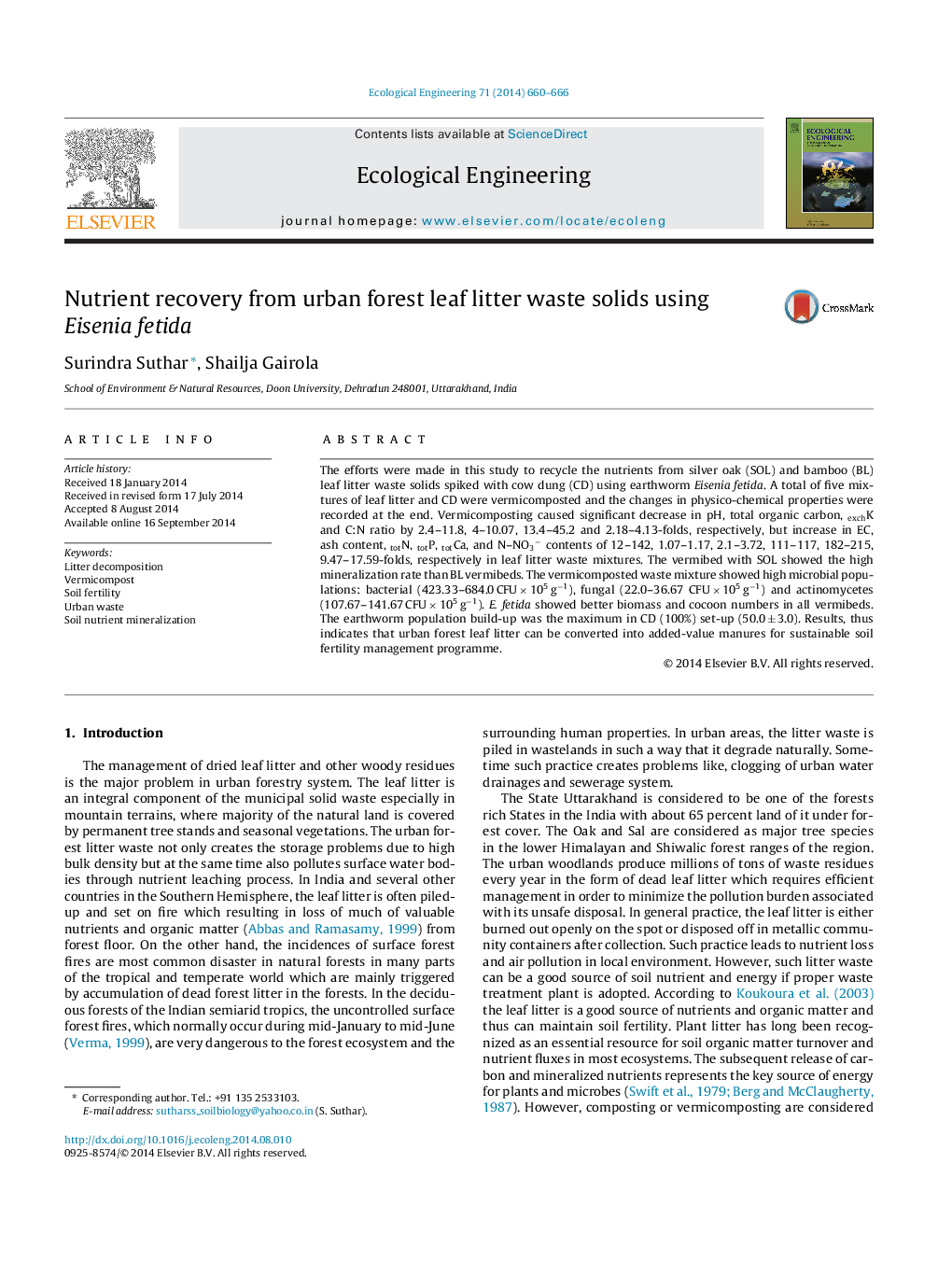| Article ID | Journal | Published Year | Pages | File Type |
|---|---|---|---|---|
| 4389209 | Ecological Engineering | 2014 | 7 Pages |
The efforts were made in this study to recycle the nutrients from silver oak (SOL) and bamboo (BL) leaf litter waste solids spiked with cow dung (CD) using earthworm Eisenia fetida. A total of five mixtures of leaf litter and CD were vermicomposted and the changes in physico-chemical properties were recorded at the end. Vermicomposting caused significant decrease in pH, total organic carbon, exchK and C:N ratio by 2.4–11.8, 4–10.07, 13.4–45.2 and 2.18–4.13-folds, respectively, but increase in EC, ash content, totN, totP, totCa, and N–NO3− contents of 12–142, 1.07–1.17, 2.1–3.72, 111–117, 182–215, 9.47–17.59-folds, respectively in leaf litter waste mixtures. The vermibed with SOL showed the high mineralization rate than BL vermibeds. The vermicomposted waste mixture showed high microbial populations: bacterial (423.33–684.0 CFU × 105 g−1), fungal (22.0–36.67 CFU × 105 g−1) and actinomycetes (107.67–141.67 CFU × 105 g−1). E. fetida showed better biomass and cocoon numbers in all vermibeds. The earthworm population build-up was the maximum in CD (100%) set-up (50.0 ± 3.0). Results, thus indicates that urban forest leaf litter can be converted into added-value manures for sustainable soil fertility management programme.
